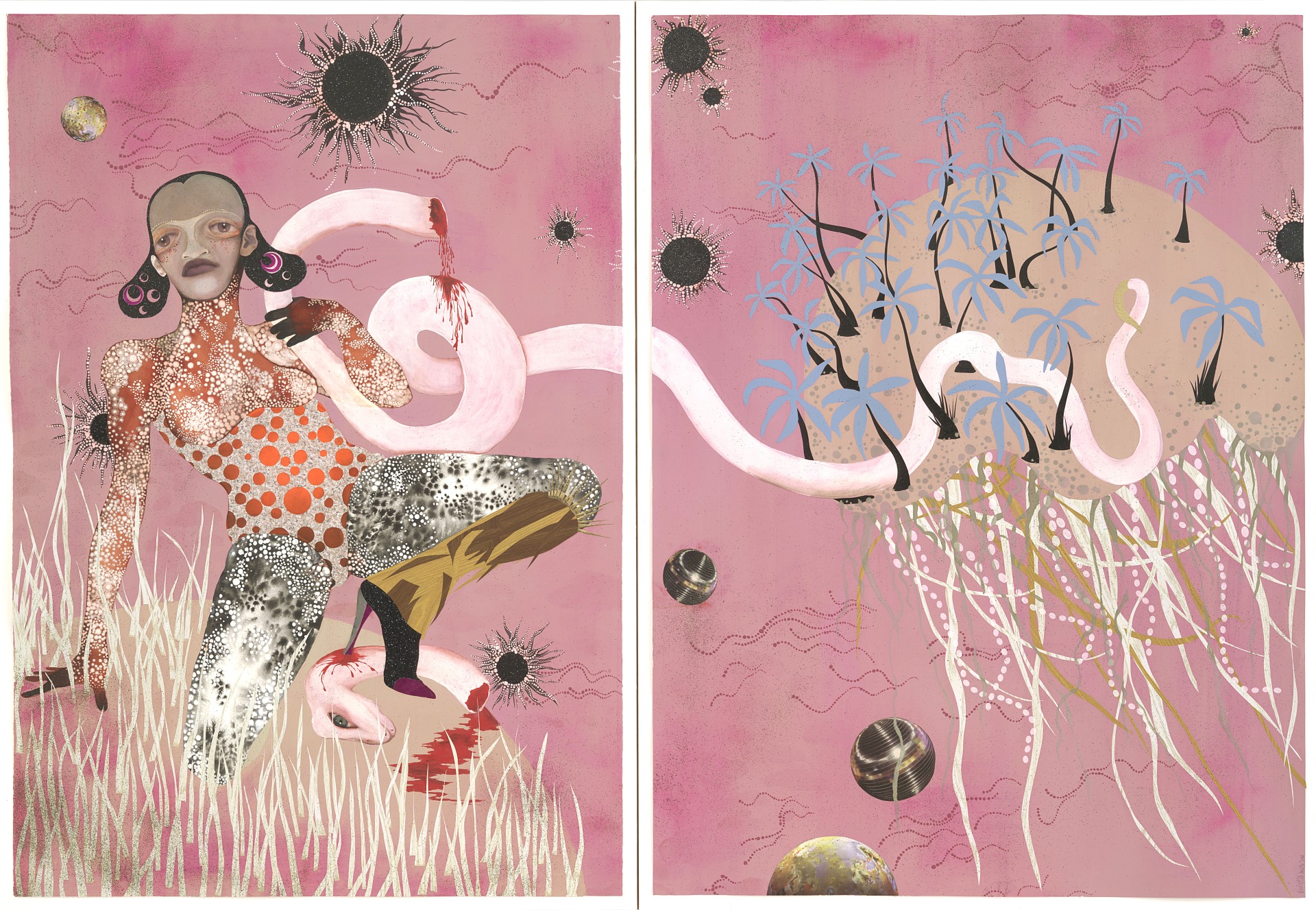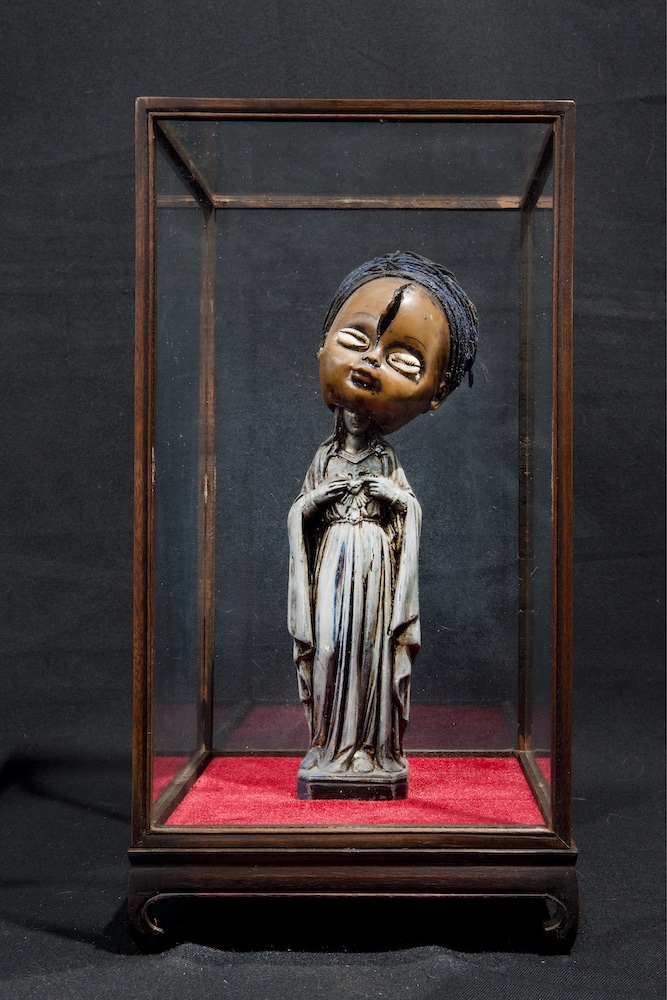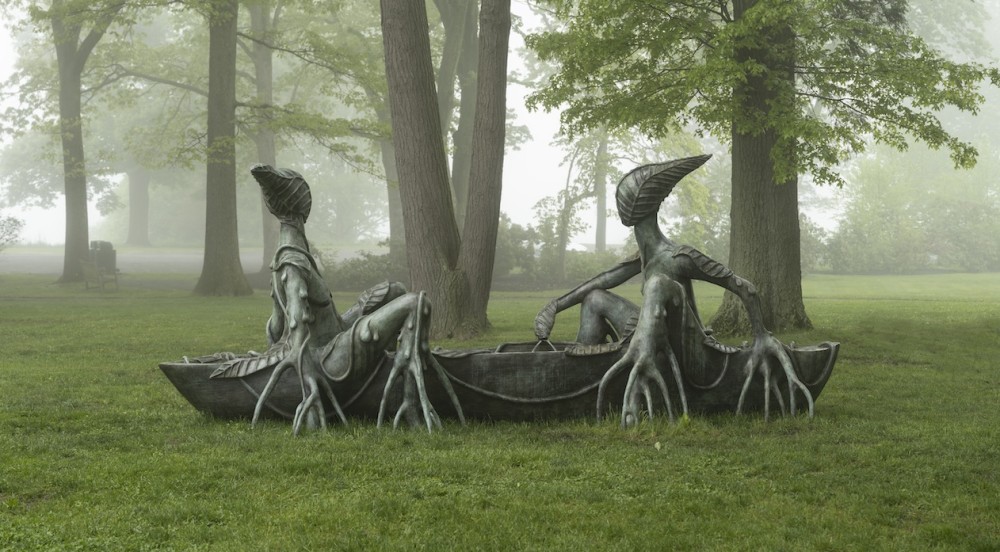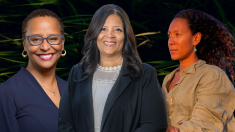The New Museum in New York City has launched a solo exhibition, "Wangechi Mutu: Intertwined," featuring more than 100 works from the Nairobi-born artist's career over 25 years.

Known for her use of camouflage, transformation and mutation, the presentation encompasses several of Mutu’s mediums, which include painting, collage, drawing, sculpture, film and performance. Her work displays fantastical forms that fuse mythical and folkloric narratives with layered sociohistorical references, according to the museum, and pays homage to her continued exploration of African and diasporic cultural traditions and the effects of colonialism and globalization.
Curator Vivian Crockett, Margot Norton and the New Museum team were tasked with condensing Mutu’s large collection of work into an engaging and introspective exhibit. Here, Crockett shares five of Mutu’s most defining pieces, which grapple with contemporary realities and create a space for a radically changed future informed by feminism and Afrofuturism.
Crocodylus, 2020

"Crocodylus is a powerful example of Wangechi’s recent monumental sculptural works, where she extends her practice in collage and sculptural assemblage to bronze," shares Crockett. "This work summons both the ancient and the futuristic and also manages to evoke the fantastical while also addressing many cultural histories across diverse geographical contexts."
Sentinel I, 2018

"The artist’s Sentinels are assembled from Kenyan soil, wood, and organic material found around the artist’s Nairobi studio. Many considered this a major shift when Mutu first started exhibiting these works," shares Crockett. "Our exhibition emphasizes that her return to Nairobi was indeed highly influential, but that she had been integrating natural materials and many of the same strategies in earlier moments in her practice."
Intertwined, 2003

"We loved the idea of naming the show after this small but mighty work. To us, it exemplified themes that are very central to Mutu’s work: hybrid beings, transformation, interspecies connection and the force of femme sexuality," explains Crockett. "I love how she transformed a National Geographic photograph of African wild dogs into a defiant pin-up image!"
Yo Mama, 2003

"It’s very special to have this work back at the New Museum, 20 years after it was commissioned for the exhibition "Black President: The Art and Legacy of Fela Anikulapo-Kuti” (2003). I love that Mutu chose to honor Kuti’s mother, Funmilayo Anikulapo-Kuti, rather than Fela himself," says Crockett. "His radicality was deeply influenced by Funmilayo’s courageous political force. Stylistically, this work represents a shift into larger-scale work and the artist’s use of the diptych format."
Maria, 1997

"One of her earliest works included in the show, Maria, is a mesmerizing example of her use of found materials, in this case, a doll’s head she found on the street," says Crockett. "The ability to fuse and bind seemingly disparate elements into a new form is a hallmark of the artist’s practice across media."













